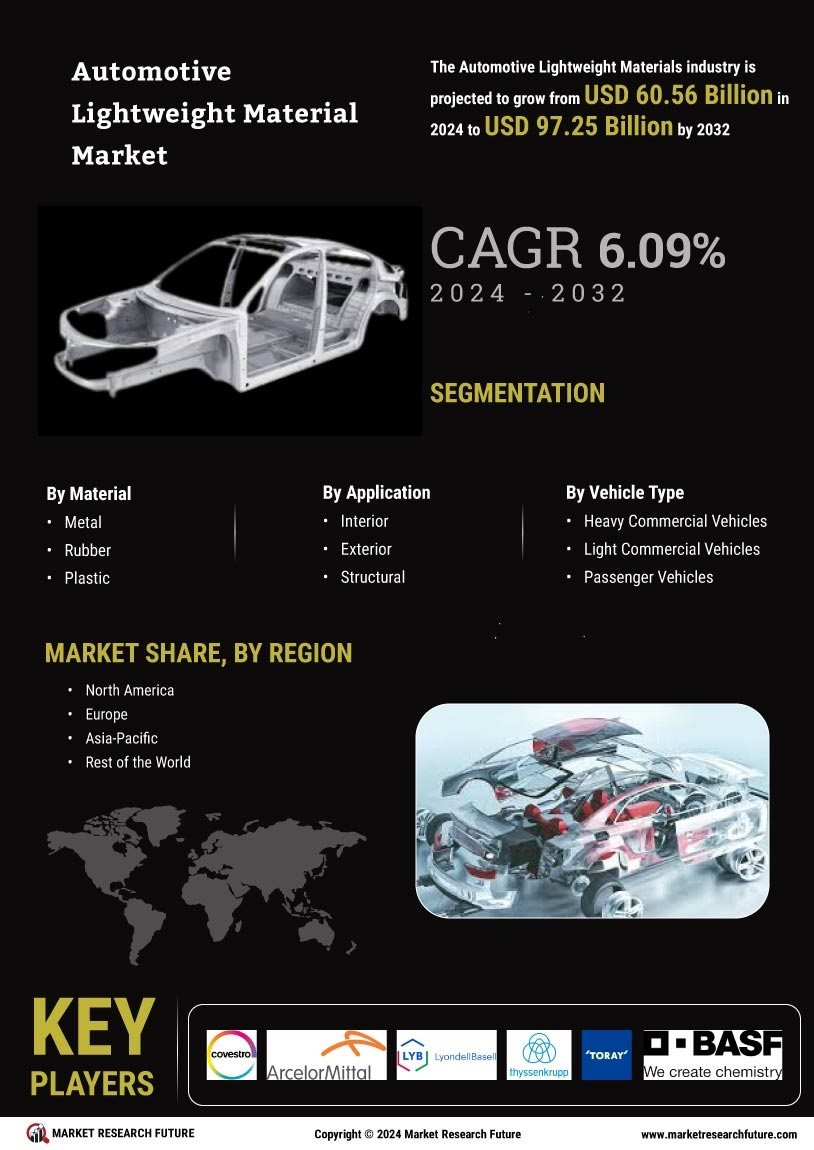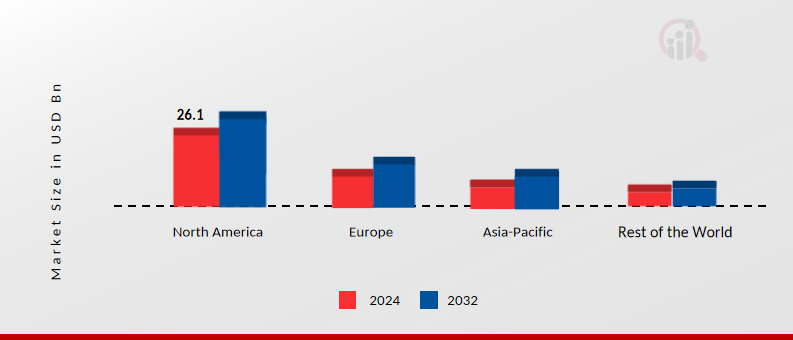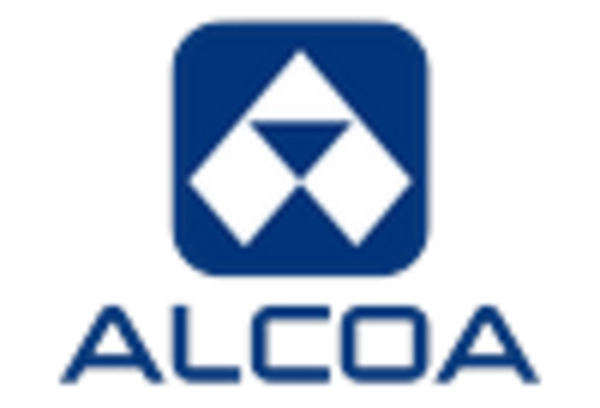Rising Fuel Efficiency Standards
The Automotive Lightweight Materials Market is experiencing a notable shift due to the increasing fuel efficiency standards imposed by various regulatory bodies. These standards compel manufacturers to innovate and adopt lightweight materials to enhance vehicle performance while reducing emissions. For instance, the Corporate Average Fuel Economy (CAFE) standards in several regions have set ambitious targets for fuel efficiency, prompting automakers to explore materials such as aluminum, magnesium, and advanced composites. The adoption of these materials not only aids in meeting regulatory requirements but also contributes to overall vehicle weight reduction, which is projected to improve fuel economy by up to 30%. This trend indicates a strong demand for lightweight materials, as manufacturers strive to comply with evolving regulations and consumer expectations for more efficient vehicles.
Cost Reduction Strategies in Manufacturing
Cost reduction remains a pivotal driver in the Automotive Lightweight Materials Market, as manufacturers continuously seek ways to optimize production processes. The integration of lightweight materials often leads to lower overall manufacturing costs due to reduced energy consumption during operation and improved fuel efficiency. For example, the use of aluminum in vehicle production can result in significant savings over the vehicle's lifecycle, as lighter vehicles require less energy to operate. Additionally, advancements in recycling technologies for lightweight materials are further contributing to cost efficiency. As manufacturers adopt these strategies, the demand for lightweight materials is likely to increase, as companies aim to balance performance enhancements with cost-effective solutions.
Technological Innovations in Material Science
The Automotive Lightweight Materials Market is significantly influenced by ongoing technological innovations in material science. Advances in manufacturing processes and material development have led to the creation of new lightweight materials that offer enhanced strength-to-weight ratios. Innovations such as 3D printing and nanotechnology are enabling the production of complex geometries and lightweight structures that were previously unattainable. For instance, the introduction of carbon fiber reinforced polymers has revolutionized the automotive sector, providing manufacturers with materials that are not only lightweight but also exceptionally strong. This technological progress is expected to drive the adoption of lightweight materials, as automakers seek to leverage these advancements to improve vehicle performance and meet stringent regulatory standards.
Consumer Demand for Performance and Efficiency
In the Automotive Lightweight Materials Market, consumer preferences are increasingly leaning towards vehicles that offer superior performance and efficiency. As consumers become more environmentally conscious, there is a growing demand for cars that not only perform well but also consume less fuel. Lightweight materials play a crucial role in achieving these objectives, as they enhance acceleration, handling, and braking performance. For example, vehicles constructed with advanced lightweight materials can achieve a weight reduction of approximately 20 to 30%, leading to improved fuel efficiency and reduced emissions. This consumer-driven demand is likely to propel the market for lightweight materials, as manufacturers seek to align their offerings with the expectations of a more discerning customer base.
Environmental Regulations and Sustainability Initiatives
The Automotive Lightweight Materials Market is increasingly shaped by stringent environmental regulations and sustainability initiatives. Governments worldwide are implementing policies aimed at reducing carbon emissions and promoting sustainable practices within the automotive sector. These regulations often encourage the use of lightweight materials, which can significantly lower a vehicle's carbon footprint. For instance, the European Union has set ambitious targets for reducing greenhouse gas emissions from vehicles, prompting manufacturers to adopt lightweight materials to comply with these regulations. The shift towards sustainability not only aligns with regulatory requirements but also resonates with consumers who prioritize eco-friendly vehicles. This growing emphasis on environmental responsibility is expected to drive the demand for lightweight materials in the automotive industry.



















Leave a Comment